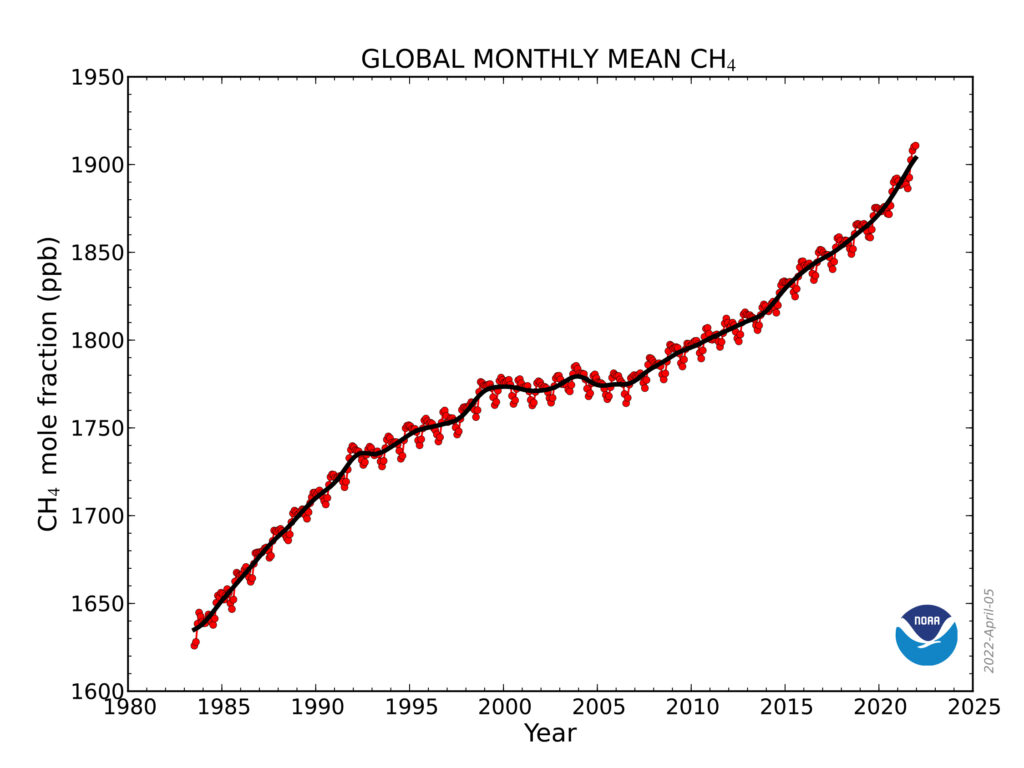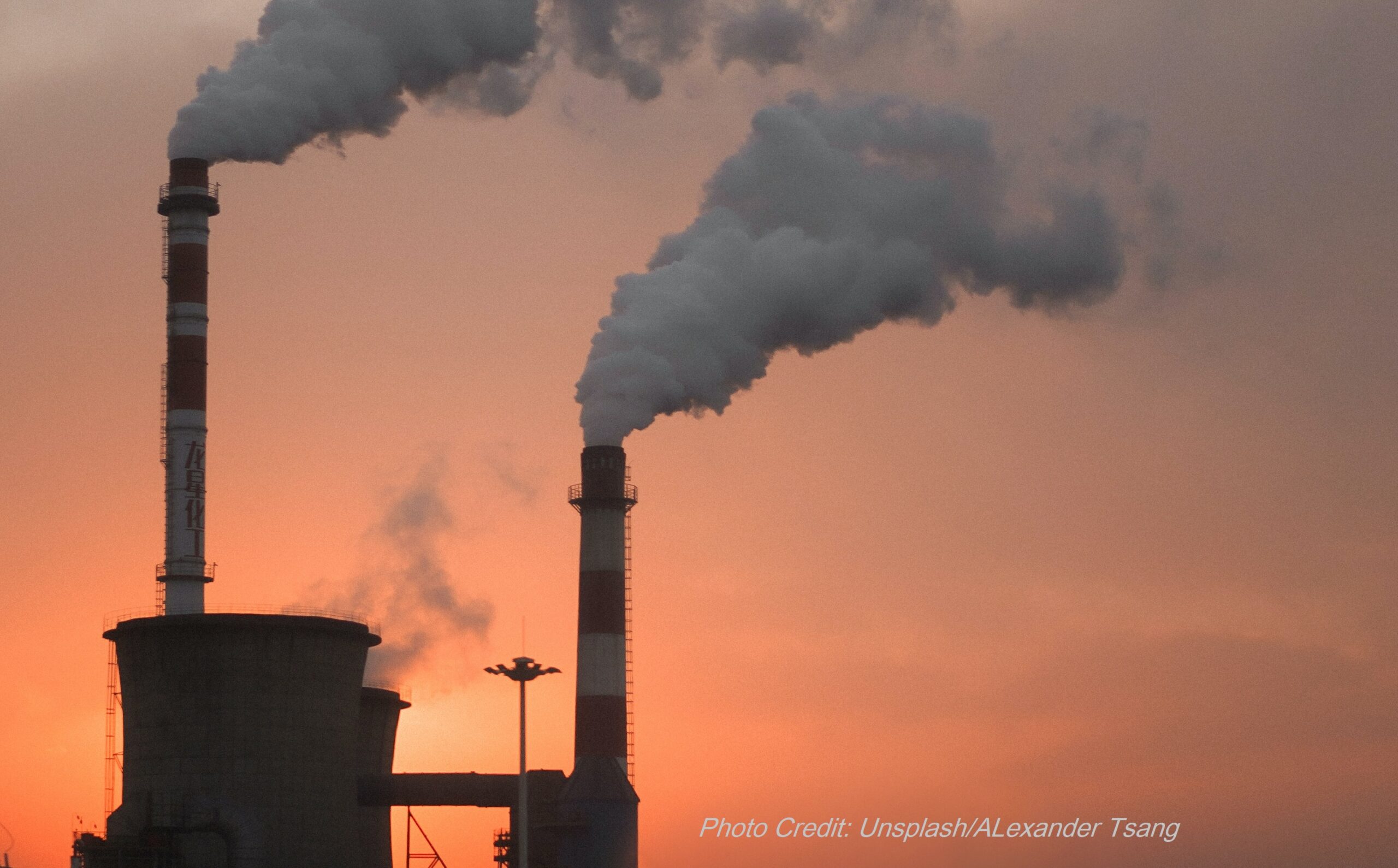The National Oceanographic and Atmospheric Administration (NOAA) said yesterday that average global methane levels in the atmosphere set another record in 2021. Both the level of methane and the rate of increase were records. This was the second year in a row that a record increase happened. This means it’s not due to recovering from the pandemic – in both 2020 and 2021 we set new records. Methane is one of the most powerful greenhouse gases (GHG) that exist.
The average global atmospheric methane level was 1895.7ppb, an increase of 17ppb over 2020. In 2020, the average global methane level increased by 15.3ppb.
In addition, carbon dioxide (CO2) also continued to increase at a historically high rate. The average global atmospheric CO2 level was 414.7ppm in 2021, an increase of 2.66ppm. It’s the 10th year in a row global CO2 levels have increased by more than 2ppm, which is the longest time with the highest rate of increase we have ever seen. CO2 is one of the longest lived GHG, and the effects will persist for almost 100 years.
NOAA measures the amount of methane, CO2, and other GHG at the Mauna Loa observatory in Hawaii, and other places around the world.
The NOAA Administrator said: “Our data show that global emissions continue to move in the wrong direction at a rapid pace,” said Rick Spinrad, Ph.D., NOAA Administrator. “The evidence is consistent, alarming and undeniable. We need to build a Climate Ready Nation to adapt for what’s already here and prepare for what’s to come. At the same time, we can no longer afford to delay urgent and effective action needed to address the cause of the problem — greenhouse gas pollution.”
Considering what the IPCC report said earlier this week, it is clear we have a lot of work to do in just a few years. We need all hands on deck, with policy and implementation at every level. We need clean energy and clean transportation everywhere. We need energy conservation. We need a resilient electric grid, and EV charging stations to support EV cars, trucks and buses.
School systems can convert their fleets to EV schoolbuses, make sure buildings are weatherized and lights are LED, and install solar or perhaps wind at each school.
Cities, counties, and states can do the same – energy conservation on buildings, convert fleets, and install solar and maybe wind. They can also pass policy measures that move communities to clean renewable power and transportation, and encourage power companies to install solar and wind power instead of relying on fossil fuels.
And the President and Congress should be doing all they can – passing policy, funding the transition, creating incentives, and making sure our infrastructure can withstand the heatwaves, storms, and fires that will continue to get worse as long as we put more GHG in the air.
Thankfully, we know that we have the tools and resources to do what we need to do. We just need to do it, and your voice when calling your elected leaders can really make a difference.
Read the NOAA press release here.
Read a news report about the NOAA methane levels here.
04/08/2022





